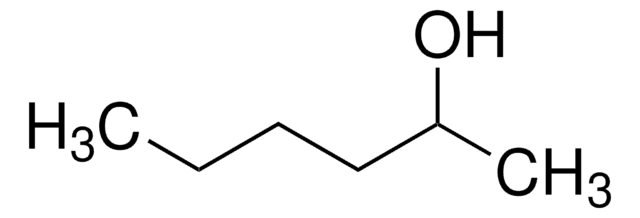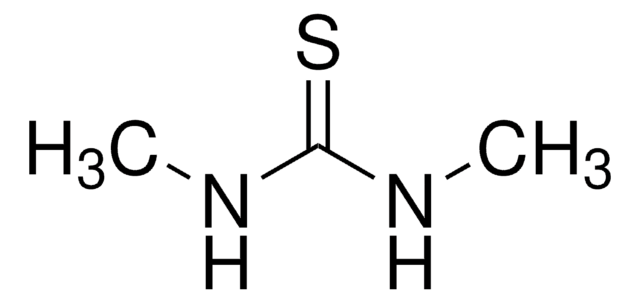H13303
1-Hexanol
reagent grade, 98%
Sinónimos:
Alcohol hexílico
About This Item
Productos recomendados
grado
reagent grade
Nivel de calidad
densidad de vapor
4.5 (vs air)
presión de vapor
1 mmHg ( 25.6 °C)
Ensayo
98%
Formulario
liquid
temp. de autoignición
559 °F
lim. expl.
0.34-6.3 %
índice de refracción
n20/D 1.418 (lit.)
bp
156-157 °C (lit.)
mp
−52 °C (lit.)
densidad
0.814 g/mL at 25 °C (lit.)
cadena SMILES
CCCCCCO
InChI
1S/C6H14O/c1-2-3-4-5-6-7/h7H,2-6H2,1H3
Clave InChI
ZSIAUFGUXNUGDI-UHFFFAOYSA-N
¿Está buscando productos similares? Visita Guía de comparación de productos
Categorías relacionadas
Descripción general
Aplicación
- As an oil phase in the preparation of manganese zinc ferrite nanoparticles by precipitation in reverse microemulsion system.
- As a solvent in the separation of carboxylic acids and tetrahydrofurfuryl alcohol from water.
- As a solvent in the synthesis of ZnO (zinc oxide) quantum particles from zinc acetate by precipitation method.
Características y beneficios
Palabra de señalización
Warning
Frases de peligro
Consejos de prudencia
Clasificaciones de peligro
Acute Tox. 4 Dermal - Acute Tox. 4 Oral - Eye Irrit. 2 - Flam. Liq. 3
Código de clase de almacenamiento
3 - Flammable liquids
Clase de riesgo para el agua (WGK)
WGK 1
Punto de inflamabilidad (°F)
140.0 °F - closed cup
Punto de inflamabilidad (°C)
60 °C - closed cup
Elija entre una de las versiones más recientes:
¿Ya tiene este producto?
Encuentre la documentación para los productos que ha comprado recientemente en la Biblioteca de documentos.
Los clientes también vieron
Nuestro equipo de científicos tiene experiencia en todas las áreas de investigación: Ciencias de la vida, Ciencia de los materiales, Síntesis química, Cromatografía, Analítica y muchas otras.
Póngase en contacto con el Servicio técnico










